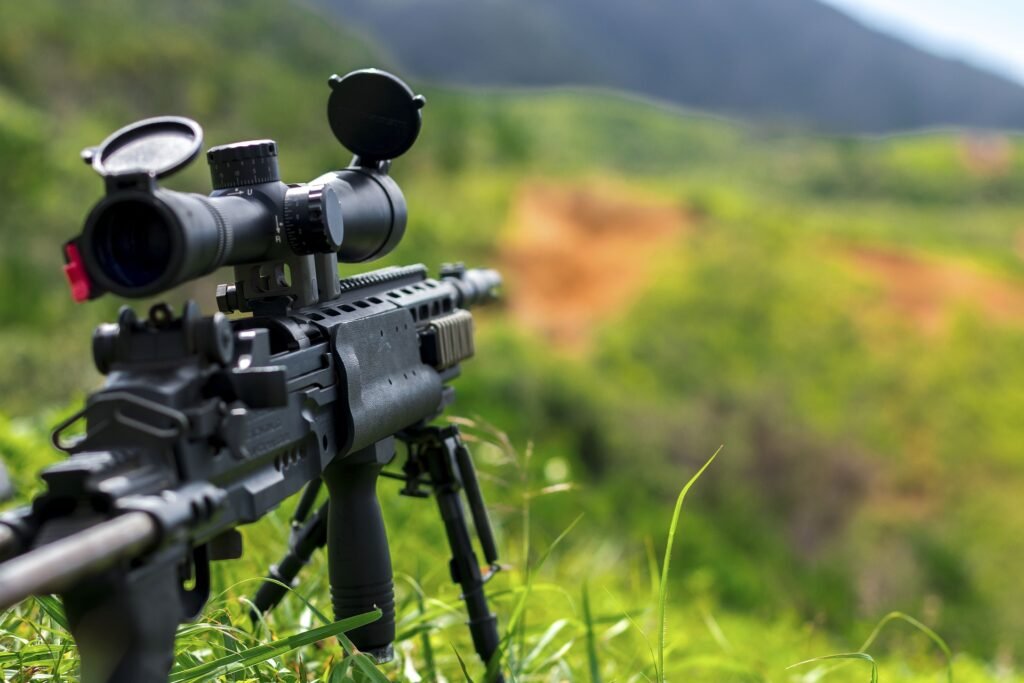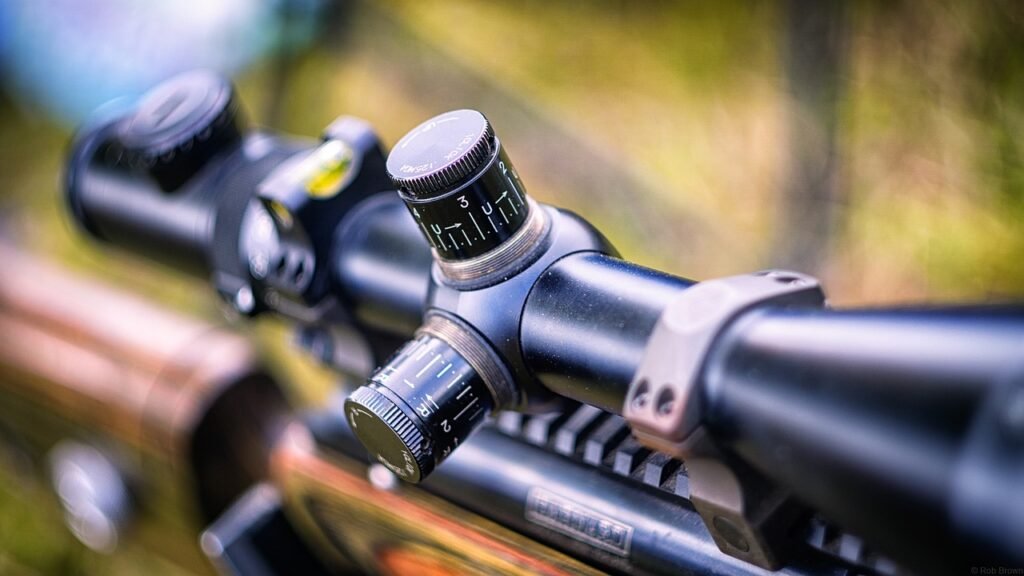The most critical tool for a marksman who is engaging targets at a distance is a long range rifle scope. With a high-power scope, a marksman can identify and engage targets that they otherwise may not be able to.
If you’re new to the world of long-range shooting, scope selection can be a major challenge. In today’s market, there are a wide variety of optics to choose from which can make it difficult for a beginner to know what they should choose.
This guide will help you understand the key factors you need to consider when purchasing a long-range rifle scope. We’ll identify the primary attributes to think about for your next scope, so you can be sure that you’re selecting the proper products when making your decision.
KEY FACTORS IN YOUR PURCHASING DESIGN

Before you begin, you need to determine what the primary usage of your optic will be to determine what you require in an optic. Some factors could prove to be a deal breaker depending on what your use case may be.
– Budget
– Magnification Range and Focal Plane
– Lens Diameter and Quality
– Turret Quality
– Total Elevation Adjustment
– Reticle Selection
– Additional Features
– Weight/Size
BUDGETING FOR YOUR OPTIC
Long range rifle scopes can range from a few hundred dollars to several thousand dollars depending on features and brand. One of the first things you should consider when budgeting for your rifle setup is the optic and mount.
Many experts recommend that you spend a minimum of 50% of the worth of your rifle on the optic. Optics are the primary accessory on any rifle, and you’ll only be as accurate as the scope allows.
If you can’t afford the above mentioned 50%, no worries. Just set a sensible price consistent with your available budget, and always remember to consider the cost of the scope mount. Your optic mount is nearly as important as the optic itself.
MAGNIFICATION RANGE AND FOCAL PLANE
Once you have a price point in mind, you’ll need to determine your magnification range and focal plane needs.
Despite some beliefs, more magnification isn’t always better. A high-quality 15x magnification is often far better than a lesser 24x, even when you’re shooting at long distances.
For targets within 1000 yards, consider scopes with a minimum of 15x maximum magnification such as a 4-16x or 3-18x scope.
If you intend to shoot beyond 1000 yards, we recommend a scope with a minimum of 24x maximum magnification. Depending on environmental conditions, you may not use that maximum power, but it’ll still help you identify targets at those ranges.
Typically for a long-range rifle scope, you would want a first focal plane (FFP) scope. On an FFP scope, the reticle will scale with the magnification so it’s always consistent. A second focal plane (SFP) scope has reticles that are only true at maximum power, causing your holdovers to be different with each magnification setting. The one catch is that first focal plane scopes do come with a significant price increase, however this can be completely worthwhile for long-range shooting.
LENS DIAMETER AND QUALITY
The qualify of your optic’s image comes from the dimensions and quality of its lenses.
Your objective lens collects the light, so larger objective lenses generate a brighter image. This can be important in low-light conditions, where smaller lenses can struggle with downrange visibility. For long range rifle scopes, we highly recommend you stick to 50mm and 56mm objective lenses.
Lens coatings can also be an important feature as they reduce glare and light loss from reflections. Typically you will see varying levels of lens coating depending on how many applications of the coating have been done and on how many of the lens surfaces.
If you’re unable to test a scope firsthand, the differences can be difficult to really get a feel for. Fortunately, optics are one of the most discussed topics amongst the firearms community. By reading some reviews, you can determine which optics are going to have the best quality and meet your needs.
TURRET QUALITY

Turret quality is another important feature of a rifle scope, as you’ll likely be making elevation adjustments to account for your target’s distance.
‘Tracking’ accuracy is the mechanical accuracy of every adjustment click. When researching a scope, check the reviews to see if customers had inconsistencies or deterioration in their scope’s turret adjustments. If turret adjustments aren’t exact, the scope will have problems at long range, where minor errors are magnified.
You also want to be mindful of the feel of the turrets. Quality turrets offer crisp clicks which will be both felt and heard as you make your adjustments. Bad turrets can feel soft in their movement, making it difficult to work out how far you’ve adjusted without looking at the turrets numbering instead of focusing on your target.
MAXIMUM ELEVATION ADJUSTMENT
The maximum elevation adjustment of a scope is critical to determining it’s maximum range with a given cartridge.
For example, let’s say you’re shooting at a target 1000 yards away, and you recognize that your bullet will drop 10 MIL to the target. If your scope only has 15 MIL of total elevation adjustment, you’ll only be ready to adjust about 7.5 MIL if you zero near median elevation. during this case, you’d have two options: use holdovers for the remaining MIL or change to a canted mount to maneuver your zero.
Depending on range of your shot, you’ll also need a 34mm scope body. Typically, 34mm rifle scopes offer more adjustment than 30mm scopes, though the quantity will vary between manufacturers. Also, 34mm scopes often weigh more than 30mm scopes.
LONG-RANGE SCOPE RETICLES
A scope’s reticle selection also can play a crucial role within the purchasing process.
These days, most major optics manufacturers offer a wide-ranging reticle selection for long range rifle scopes. This selection can contain MIL, MOA and BDC reticles. Each one can be just as effective as the others and this decision depends mostly on personal preference and comfort. Do your research and if you’re able, experiment with the different types to see what you like best.
ADDITIONAL FEATURES OF LONG-RANGE RIFLE SCOPES
Scopes become more advanced in their technology and engineering all the time, which has opened the door to some very attractive features.
Some scopes feature locking turrets that prevent the turret from accidental adjustments. Some locks also lock in at your zero, making it much faster to return to origin without overtravel. These features are more valuable if you’re often making quick adjustments.
Reticle illumination is another area of constant innovation. the most advanced scopes have daylight-bright illumination and night-sight compatibility, plus an extended battery life and a motion-sensing sleep mode. These features are more valuable if you’re shooting in adverse or transitional lighting conditions, where a black reticle won’t stand out against the target. When evaluating the extra features of rifle optics, you want to consider your use case and desired application. If you’re going to a flat range and only shooting at bright targets during the day, advanced illumination and turret locks are likely not worth considering. But if you would like a more versatile optic, these enhancements are potentially worth the added cost.
WEIGHT AND SIZE
For long range rifle scopes, a scope’s weight and profile are a mostly personal preference.
Many long-range precision rifles weigh around 10lbs without optics, which isn’t necessarily a bad thing. For magnum-caliber rifles, that weight is crucial to absorbing the shock of each shot. Weight also can come from a bigger barrel profile, which helps disperse heat and improve rigidity for improved accuracy.
In short, many precision rifles are already heavy, and a scope’s weight could be insignificant for the intended application. As a result, many long-distance marksmen aren’t overly concerned about optic weight, especially if the scope has a great feature set and quality materials. However, if you’re buying for hunting or tactical purposes, weight can be a problem. If you’ve got to hold your rifle for an extended time, a heavy scope will inevitably create discomfort. With these things in mind, it’s best to determine an overall weight of your rifle with optic and accessories.
LONG RANGE RIFLE SCOPES: FINAL THOUGHTS
When you’re buying long range rifle scopes, keep those key factors in mind. As long as you set a good budget, prioritize your needs, and do some deep research, you’ll be ready to find an extended range rifle scope that completely suits your needs.
An intriguing discussion is definitely worth comment. I do think that you should write more on this subject matter, it may not be a taboo matter but usually people dont discuss these issues. To the next! Many thanks!!
I was excited to uncover this great site. I need to to thank you for your time for this particularly wonderful read!! I definitely enjoyed every part of it and I have you book marked to check out new stuff in your web site.
Itís nearly impossible to find well-informed people for this topic, but you seem like you know what youíre talking about! Thanks